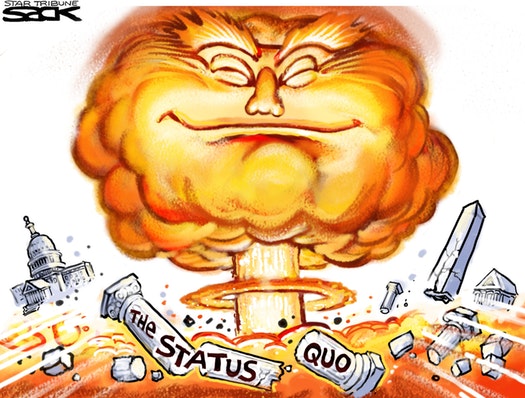
by Adam Hartung | Mar 13, 2018 | Defend & Extend, Growth Stall, Innovation, Investing, Software
In February, Berkshire Hathaway revealed it had dumped its IBM position. Good riddance to a stock that has gone down for 5 years while the S&P went up! What did Buffett do with the money? He loaded up on Apple – making that high-flyer Berkshire’s #1 holding. So, isn’t the smart thing now to buy Apple?
First, don’t confuse your investing goals with Berkshire Hathaway’s. It may seem that everyone has the same objective, to buy stocks that go up. But Berkshire is a very special case. As I pointed out in 2014, we mere mortals can’t invest like Buffett, and shouldn’t try. Berkshire Hathaway has the opportunity to make investments in special situations with tremendous return potential that we don’t have. Berkshire’s investment strategy is to invest where it can create cash to prepare for special situations, or to park money where it can make a decent return, and hopefully generate cash while it waits.
Apple is the #1 most cash-rich company on the planet, and with the new tax laws it can repatriate that cash. This is an opportunity for a “special dividend” to investors, and that is the kind of thing that Buffett loves. He isn’t a venture capitalist looking for a 10x price appreciation. He wants a decent 5% rate of return, and hopefully dividends, so he can grow cash for his special situation opportunities. Apple, the most valuable company on any exchange, is exactly the kind of company where he can place a few billion dollars without driving up the price and let it sit making a solid 5-6%, collect dividends and maybe get a few kickers from things like the cash repatriation.
Second, let’s not forget that Buffett’s IBM buying spree lost money. If he was a great tech investor, he never would have bought IBM. He bought it for the same reason he’s buying Apple, only he was wrong about what was going to happen to IBM as it continued to lose relevancy.
I pointed out in May, 2016 that Apple was showing us all a lot of sustaining innovations, with new rev levels of existing products, but almost no new disruptive innovations. The company that once gave us iPods, iTunes, iPhones and iPads was increasingly relying on the next version of everything to drive sales. Lots of incremental improvement. But little discussion about any breakthrough products, like iBeacon, ApplePay or even the Apple Watch. In a real way, Apple was looking a lot more like the old Microsoft with its Windows and Office fascination than the old Apple.
By October, 2016 Apple hit a Growth Stall. While this may have seemed like “no big deal,” recall that only 7% of the time do companies maintain a 2% growth rate after stalling. Is Apple going to be in that 7%? With the launch of the less-than-overwhelming iPhone X, and the actual drop in iPhone sales in Q4, 2017 it looks increasingly like Apple is on the same road as all other stalled companies.
In the short term Apple has said it is milking its installed base. By constantly bringing out new apps it has raised iTunes sales to over $30B/quarter. And it has a dedicated cadre of developers making over $25B/year creating new apps. So Apple is doing its best to get as much revenue out of that installed base of iPhones as it can, even if device sales slow (or decline.) For Buffett, this is no big deal. After all, he’s parking cash and hoping to get dividends. Milking the base is a cash generation strategy he would love – like a railroad, or Coca-Cola.
But if you’re interested in maintaining high returns in your portfolio, be aware of what’s happening. Apple is changing. It’s not going to falter and fail any time soon. But don’t be lulled by Berkshire’s big purchases into thinking Apple in 2018 is anything like it was in 2012 – or through 2014. Instead, keep your eyes on game changers like Netflix, Tesla and Amazon.
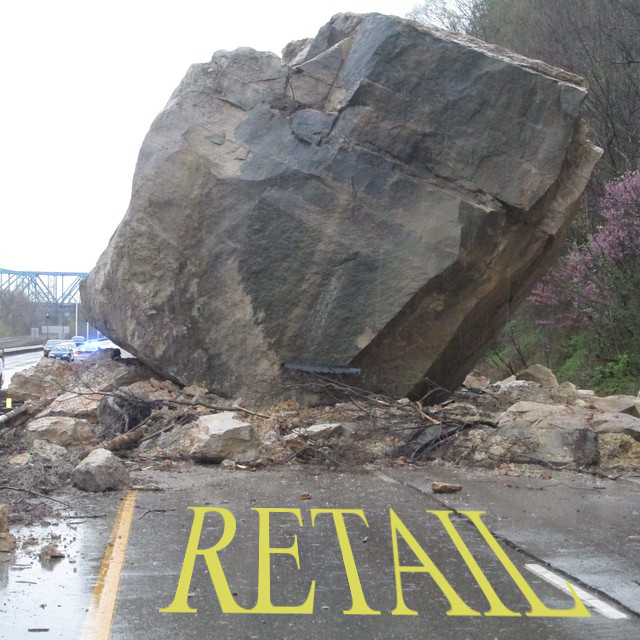
by Adam Hartung | Mar 6, 2018 | In the Swamp, Investing, Retail, Scenario Planning
On February 20, 2018 Walmart’s stock had its biggest price drop ever. And the second biggest percentage decline ever. Even though same store sales improved, investors sold off the stock in droves. And after a pretty healthy recent valuation run-up.
What happened? Simply put, Walmart said its on-line sales slowed and its cost of operations rose, slowing growth and cramping margins. In other words, even though it bought Jet.com Walmart is still a long, long way from coming close to matching the customer relationship and growth of Amazon.com. And (surprise, surprise) margins in on-line aren’t an easy thing — as Amazon’s thin margins for 15 years have demonstrated.
In other words, this was completely to be expected. Walmart is a behemoth with no adaptability. For decades the company has been focused on how to operate its warehouses and stores, and beat up its suppliers. Management had to be drug, kicking and screaming, into e-commerce. And failing regularly it finally made an acquisition. But to think that Jet.com was going to change WalMart’s business model into a growing, high profit operation any time soon was foolish. Management still wants people in the store, first and foremost, and really doesn’t understand how to do anything else.
All the way back in 2005, I wrote that Walmart was too big to learn, and was unwilling to create white space teams to really explore growing e-commerce (hence the belated Jet-com acquisition.) In 2007, I wrote that calling Walmart a “mature” competitor with huge advantages was the wrong way to view the company already under attack by all the e-commerce players. In July, 2015 Amazon’s market cap exceeded Walmart’s, showing the importance of retail transformation on investor expectations. By February, 2016 there were 10 telltale signs Walmart was in big trouble by a changing retail market. And by October, 2017 it was clear the Waltons were cashing out of Walmart, questioning why any investor should remain holding the stock.
It really is possible to watch trends and predict future markets. And that can lead to good predictions about the fates of companies. The signs were all there that Walmart shouldn’t be going up in value. Hope had too many investors thinking that Walmart was too big to stumble – or fail. But hope is not how you should invest. Not for your portfolio, and not for your business. Walmart should have dedicated huge sums to e-commerce 15 years ago, now it is playing catch up with Amazon.com, and that’s a race it simply won’t win. Are you making the right investment decisions for your business early enough? Or will you stumble like Walmart?

by Adam Hartung | Jan 23, 2018 | Disruptions, Investing, Retail, Trends
Business Insider is projecting a “tsunami” of retail store closings in 2018 — 12,000 (up from 9,000 in 2017.) Also, the expect several more retailers will file bankruptcy, including Sears.
Duh. Nothing surprising about those projections. In mid-2016, Wharton Radio interviewed me about Sears, and I made sure everyone clearly understood I expect it to fail. Soon. In December, 2016 I overviewed Sears’ demise, predicted its inevitable failure, and warned everyone that all traditional retail was going to get a lot smaller. I again recommended dis-investing your portfolio of retail. By March, 2017 the handwriting was so clear I made sure investors knew that there were NO traditional retailers worthy of owning, including Walmart. By October, 2017 I wrote about the Waltons cashing out their Walmart ownership, indicating nobody should be in the stock – or any other retailer.
The trend is unmistakable, and undeniable. The question is – what are you going to do about it? In July, 2015 Amazon became more valuable than Walmart, even though much smaller. I explained why that made sense – because the former is growing and the latter is shrinking. Companies that leverage trends are always worth more. And that fact impacts YOU! As I wrote in February, 2017 the “Amazon Effect” will change not only your investments, but how you shop, the value of retail real estate (and thus all commercial real estate,) employment opportunities for low-skilled workers, property and sales tax revenues for all cities impacting school and infrastructure funding, and all supply chain logistics. These trends are far-reaching, and no business will be untouched.
Don’t just say “oh my, retailers are crumbling” and go to the next web page. You need to make sure your strategy is leveraging the “Amazon Effect” in ways that will help you grow revenues and profits. Because your competition is making plans to use these trends to hurt your business if you don’t make the first move. Need help?

by Adam Hartung | Jan 5, 2018 | Defend & Extend, Innovation, Leadership
Fast Company just published 3 common behaviors that kill innovation. Congratulations! The editors reinforce that most management behavior and best practices are lethal to innovation.
All the way back in November, 2009, my Forbes column explained that organizations approach innovation entirely wrong- trying far too hard to build on historical company strengths, which leads to weak extensions that fail to generate sustainable growth. In November, 2011, my Forbes column identified the “killer comments” that leaders used to stop innovation. Fast Company’s list is remarkably similar to that 2011 column, though it is a shorter list. In June, 2015, my Forbes column described how HR best practices are designed to limit diversity in thinking- and always lead to killing innovation projects. Factually, as I wrote in February, 2011, almost nobody would hire the next Steve Jobs if he applied for a job!
Quite simply, we have built organizations that rigidly adhere to continuing past processes, and are hard wired to resist innovation. This phenomenon has been around for a long time, even though Fast Company just discovered it, and I’ve been writing about it for 9 years. Give my past columns a read and you’ll be forewarned of the risks to brainstorming, or throwing together innovation teams, without a system of new thinking.
Fortunately, smart leaders today see that by focusing on external data and cleverly using outside thinkers, innovation can create a high-growth future. The approach I’ve been teaching organizations for years. Only by overcoming outdated, historical management practices can a modern organization thrive. You can do it- if you smartly use trends and new approaches.
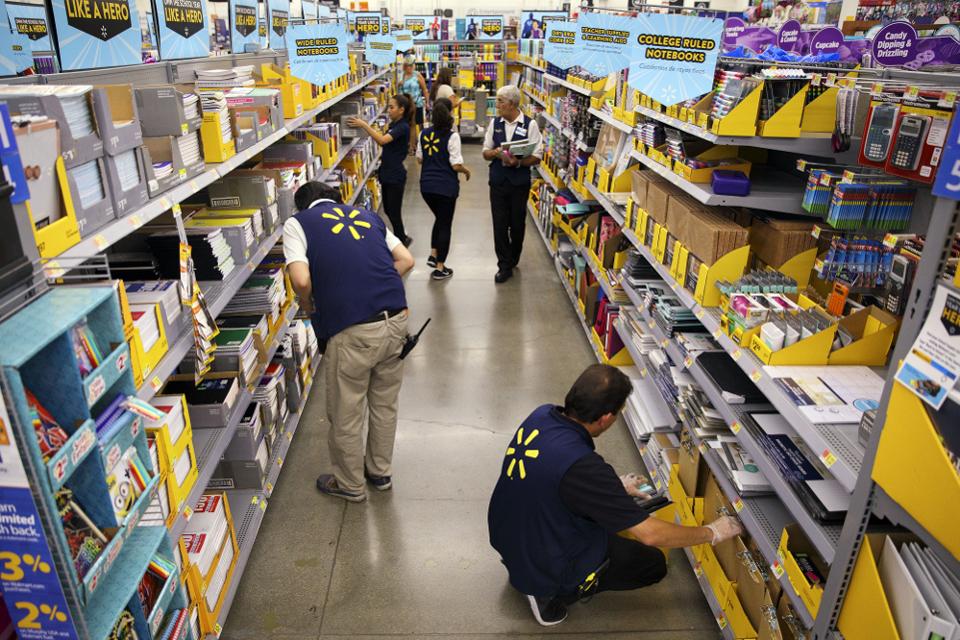
by Adam Hartung | Oct 17, 2017 | Defend & Extend, In the Swamp, Investing, Leadership, Retail
The Waltons Are Cashing Out Of Walmart — And You Should Be, Too
Employees restock shelves of school supplies at a Walmart Stores Inc. location in Burbank, CA. Bloomberg
Last week there was a lot of stock market excitement regarding WalMart. After a “favorable” earnings report analysts turned bullish and the stock jumped 4% in one day, WMT’s biggest rally in over a year, making it a big short-term winner. But the leadership signals indicate WalMart is probably not the best place to put your money.
WalMart has limited growth plans
WalMart is growing about 3%/year. But leadership acknowledged it was not growing its traditional business in the USA, and only has plans to open 25 stores in the next year. It hopes to add about 225 internationally, predominantly in Mexico and China, but unfortunately those markets have been tough places for WalMart to grow share and make profits. And the company has been plagued with bribery scandals, particularly in Mexico.
And, while WalMart touts its 40%+ growth rate on-line, margins online (including the free delivery offer) are even lower than in the traditional Wal-Mart stores, causing the company’s gross margin percentage to decline. The $11.5 billion on-line revenue projection for next year is up, but it is 2.5% of Walmart’s total, and a mere 7-8% of Amazon’s retail sales. Amazon remains the clear leader, with 62% of U.S. households having visited the company in the second quarter. And it is not a good sign that WalMart’s greatest on-line growth is in groceries, which amount to 26% of on-line salesalready. WalMart is investing in 1,000 additional at-store curb-side grocery pick-uplocations, but this effort to defend traditional store sales is in the products where margins are clearly the lowest, and possibly nonexistent.
It is not clear that WalMart has a strategy for competing in a shrinking traditional brick-and-mortar market where Costco, Target, Dollar General, et.al. are fighting for every dollar. And it is not clear WalMart can make much difference in Amazon’s giant on-line market lead. Meanwhile, Amazon continues to grow in valuation with very low profits, even as it grows its presence in groceries with the Whole Foods acquisition. In the 17 months from May 10, 2016 through October 10, 2017 WalMart’s market cap grew by $24 billion (10%,) while Amazon’s grew by $174 billion (57%.)
Even after recent gains for WalMart, its market capitalization remains only 53% of its much smaller on-line competitor. This creates a very difficult pricing problem for WalMart if it has to make traditional margins in order to keep analysts, and investors, happy.
Leadership is not investing to compete, but rather cashing out the business
To understand just how bad this growth problem is, investors should take a look at where WalMart has been spending its cash. It has not been investing in growing stores, growing sales per store, nor really even growing the on-line business. From 2007-2016 WalMart spent a whopping $67.3 billion in share buybacks. That is over 20 times what it spent on Jet.com. And it was 45% of total profits during that timeframe. Additionally WalMart paid out $51.2 billion in dividends, which amounted to 34% of profits. Altogether that is $118.5 billion returned to shareholders in the last decade. And a staggering 79% of profits. It shows that WalMart is really not investing in its future, but rather cashing out the company by returning money to shareholders.
So very large investors, who control huge voting blocks, recognize that things are not going well at WalMart. But, because of the enormity of the share buybacks, the Walton family now controls over half of WalMart stock. That makes it tough for an activist to threaten shaking up the company, and lets the Waltons determine the company’s future.
There will be marginal enhancements. But the vast majority of the money is being returned to them, via $20 billion in share repurchases and $1.5 billion in cash dividends annually.
Amazon spends nothing on share repurchases. Nor does it distribute cash to shareholders via dividends. Amazon’s largest shareholder, Jeff Bezos, invests all the company money in new growth opportunities. These nearly cover the retail landscape, and increasingly are in other growth markets like cloud services, software-as-a-service and entertainment. Comparing the owners of these companies, quite clearly Bezos has faith in Amazon’s ability to invest money for profitable future growth. But the Waltons are far less certain about the future success of WalMart, so they are pulling their money off the table, allowing investors to put their money in ventures outside WalMart.
Investing your money, do you think it is better to invest where the owner believes in the future of his company?
Or where the owners are cashing out?
Adam's book reveals the truth about how to use strategy to outpace the competition.
Follow Adam's coverage in the press and in other media.
Follow Adam's column in Forbes.
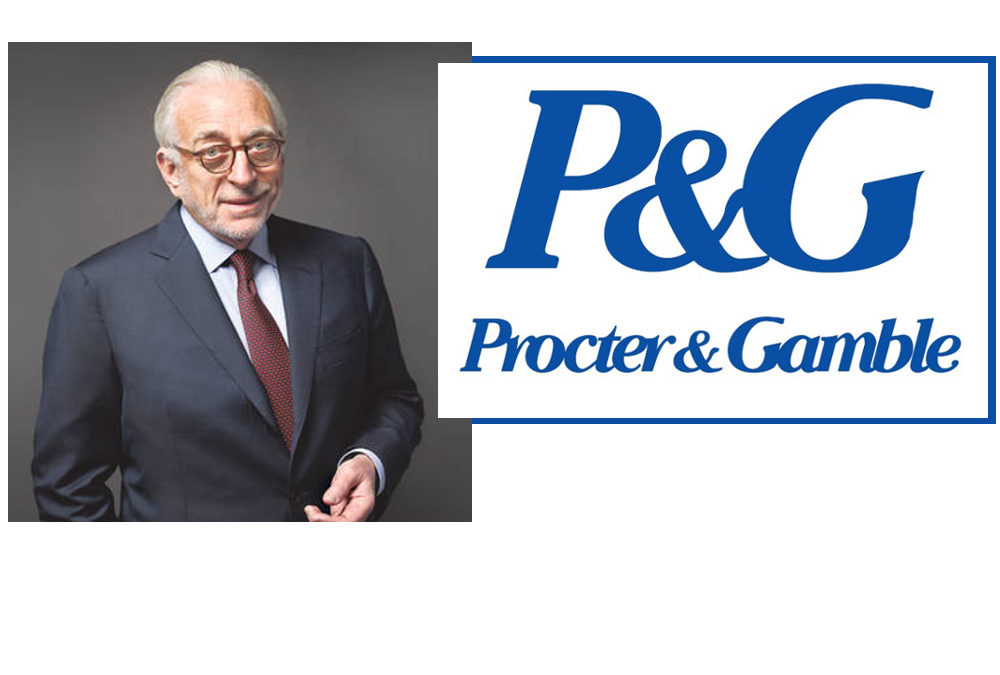
by Adam Hartung | Sep 7, 2017 | Defend & Extend, Leadership
Months ago Trian’s Nelson Peltz began buying Procter & Gamble (P&G) shares. He invested about $3.5 billion, making Trian’s ownership 1.5%. Since then he has been lobbying, unsuccessfully, for a seat on P&G’s board of directors. He has said that although P&G already has 10 outside directors on its 11 member board, adding him would make a tremendous difference increasing P&G’s market valuation. P&G is now the largest company ever to engage in a proxy battle between the existing board and an outside investor.
P&G is dead set against adding Peltz, saying he would disrupt the board, and the company, in negative ways. CNBC.com reported Peltz’ claims the company is spending $100 million on the proxy fight to keep him off the board. P&G’s proxy statement puts that sum at $35 million. Either number indicates P&G is spending a lot of money to stop the appointment of Peltz.
Nelson Peltz, Founder Trian Partners, LLC
The company defended itself, saying leadership has been growing EPS (earnings per share,) making productivity improvements, growing sales organically at 2%/year and returning huge value to shareholders. They accuse Peltz of simply planning a split of the company into 3 parts so each can go public on its own – adding little value to shareholders while damaging the company’s ability to operate.
Unfortunately, P&G’s leadership has pretty much set itself up for this battle. And shareholders may have good reason to add Peltz to the board in hopes of additional change.
P&G’s financial performance has been poor
Firstly, in the last 10 years the value of P&G has risen about 44%. But the S&P 500 has grown by 154.5%. Shareholders would have done better owning the average than owning P&G. Claims about how well P&G have done since the CEO arrived 2 years ago overlook the fact that just prior to his arrival, in November, 2014 P&G shares traded at $90-$93.85/share, which is just about where they are now. So all that’s happened is a recovery to where things were previously, not a great success. Shareholders have a right to be frustrated.
EPS has risen, but that has everything to do with share buybacks rather than earnings growth. EPS has risen about 11%. But since 2nd quarter of 2007 P&G has spent ~$61billion on share repurchases, reducing the number of shares from 3.32 billion to 2.74 billion, or 17.5%. Rather than growing earnings, leadership has been making the capital structure smaller – and thus EPS has risen while earnings have not. This is actually a program that goes all the way back to 1995, which indicates a long-term approach of focusing on EPS, which are manipulated, rather than earnings.
P&G has favored divestitures and share repurchases over innovation and acquisitions for growth
Meanwhile, P&G’s buyback program has been financed by a dramatic divestiture program, selling off very large businesses to raise cash. Over the last decade major sales included:
2009 – selling the P&G pharma business
2012 – selling the water filtration business including Pur
2012 – selling Pringles (along with several other iconic brands)
2014 – selling the dog food business
2016 – selling the Duracell battery business
2016 – selling the beauty brand business
Management tried in its response to say that innovation was just fine at P&G. But what it cited were line extensions like Tide PODs, GAIN Flings, Pampers Pants, and Oral B power toothbrush. None of these are great new innovations launching significant sales. None are new product platforms for high growth. Rather they are typical sustaining innovations applied to brands that are long in the tooth.
This is typical of the long-term lack of valuable innovation at P&G. Do you recall in 2009 when the company lauded its development of the “P&G Public Toilet Database App?” Not exactly on the top 20 iTunes list. Or do you remember in 2014 when P&G launched its “Basic” line of products, where it literally sold a less-good quality product hoping to attract a brand-conscious but quality uncaring targeted niche? Peltz is making a good point, that leadership at P&G really has forgotten what good, long-term profit producing innovation is, while succumbing to the strategy of selling major business units (reducing revenue) then using the money to buy back shares rather than investing in future growth.
P&G has not shown it understands how trends are quickly changing its business
Meanwhile, the consumer goods industry is changing dramatically, and it is not clear that P&G’s leadership is really preparing for future changes. P&G still relies heavily on television advertising to sell its products. But that approach had stopped generating profitable growth as far back as 2010. Back then Colgate was holding its market share, and growing revenues, on all its brands that compete with P&G while spending 25% less, and often much less, on advertising.
P&G is still stuck using marketing strategies that have been outdated for almost a decade. Comcast lost 90,000 subscribers in Q2, and the stock lost 7% today when Comcast management alerted investors it expects to lose 150,000 more in Q3. And while viewership is declining, ad pricing is going up, making TV advertising a less effective and more expensive marketing tactic for consumer goods. As P&G brands have fallen further behind competitors in Instagram followers, and lack good social media programs like Wendy’s, Peltz has proposed a substantial increase in digitally savvy marketers.
Simultaneously, distribution is changing dramatically. Once P&G could rely on its product dominance to dictate space usage in grocery stores and discounters. But the rise of e-commerce has dramatically affected these historical distribution channels. Today the fastest growing grocer is Aldi, which eschews brands like P&G’s in favor of its own private label. And after stunting the growth of discounters like WalMart, the leading e-commerce company, Amazon.com, has now purchased Whole Foods. This is leading everyone to expect greater growth in on-line grocery shopping and additional at-home delivery, which undercuts the former strength P&G had in traditional brick-and-mortar stores with warehouse delivery models.
Management bragged of its $3 billion in e-commerce sales, but that is a drop in the bucket. Is P&G ready to compete for sales in future markets where social media is more important than advertising? Where mobile ads have more power than print, TV, radio and traditional internet banners? Where social media groups drive more consumption behavior than company-sponsored social media pages with coupons and use recommendations? Will P&G dominate product volume when it has to rely on Amazon.com and other sites to sell and deliver its products? If people move to daily home deliveries, and less stock-up purchasing what will happen to P&G’s former brand advantage via high numbers of SKUs (stock keeping units) and large packaging options?
This will be an interesting proxy battle. There is no doubt Peltz wants to shake up the board’s behavior, compensation plans, hiring programs, targets and many of the ways management runs the company. Simultaneously, the P&G board believes it is moving in the right direction. Large shareholders are conservative, and don’t like to create problems (P&G’s largest shareholders are Vanguard, Blackrock, State Street, BofA, Capital World, Trian, Northern Trust – which combined control 24% of P&G stock.)
But this isn’t about a complete change in the board. It’s just a vote to add one additional member who is not happy with things the way they are. Will these large shareholders see a need for someone to shake things up, or will they accept current leadership’s claims that things are on the right track?
It will be interesting to watch, because Peltz isn’t without some objective concerns about P&G’s future, given its performance the last decade and the amount of change facing the industry.

by Adam Hartung | Aug 15, 2017 | Disruptions, Web/Tech
Even though most people don’t even know what they are, Bitcoins increased in value from about $570 to more than $4,300 — an astounding 750% — in just the last year. Because of this huge return, more people, hoping to make a fast fortune, are becoming interested in possibly owning some Bitcoins. That would be very risky.
Bitcoins are a crypto-currency. That means they can be used like a currency, but don’t physically exist like dollar bills. They are an online currency which can be used to buy things. They are digital cash that exist as bits on people’s computers. You can’t put them in a drawer, like dollar bills or gold Krugerrands. Bitcoins are used to complete transactions – just like any currency. Even though they are virtual, rather than physical, they are used like cash when transferred between people through the web.
dollar bills. They are an online currency which can be used to buy things. They are digital cash that exist as bits on people’s computers. You can’t put them in a drawer, like dollar bills or gold Krugerrands. Bitcoins are used to complete transactions – just like any currency. Even though they are virtual, rather than physical, they are used like cash when transferred between people through the web.
Being virtual is not inherently a bad thing. The dollars on our financial institution statement, viewed online, are considered real money, even though those are just digital dollars. The fact that Bitcoins aren’t available in physical form is not really a downside, any more than the numbers on your financial statement are not available as physical currency either. Just like we use credit cards or debit cards to transfer value, Bitcoins can be spent in many locations, just like dollars.
What makes Bitcoins unique, versus other currencies, is that there is no financial system, like the U.S. Federal Reserve, managing their existence and value. Instead Bitcoins are managed by a bunch of users who track them via blockchain technology. And blockchain technology itself is not inherently a problem; there are folks figuring out all kinds of uses, like accounting, using blockchain. It is the fact that no central bank controls Bitcoin production that makes them a unique currency. Independent people watch who buys and sells, and owns, Bitcoins, and in some general fashion make a market in Bitcoins. This makes Bitcoins very different from dollars, euros or rupees. There is no “good faith and credit” of the government standing behind the currency.
Why are currencies different from everything else?
Currencies are sort of magical things. If we didn’t have them we would have to do all transactions by barter. Want some gasoline? Without currency you would have to give the seller a chicken or something else the seller wants. That is less than convenient. So currencies were created to represent the value of things. Instead of saying a gallon of gas is worth one chicken, we can say it is worth $2.50. And the chicken can be worth $2.50. So currency represents the value of everything. The dollar, itself, is a small piece of paper that is worth nothing. But it represents buying power. Thus, it is stored value. We hold dollars so we can use the value they represent to obtain the things we want.
Currencies are not the only form of stored value. People buy gold and lock it in a safe because they believe the demand for gold will rise, increasing its value, and thus the gold is stored value. People buy collectible art or rare coins because they believe that as time passes the demand for such artifacts will increase, and thus their value will increase. The art becomes a stored value. Some people buy real estate not just to live on, but because they think the demand for that real estate will grow, and thus the real estate is stored value.
But these forms of stored value are risky, because the stored value can disappear. If new mines suddenly produce vast new quantities of gold, its value will decline. If the art is a fake, its value will be lost. If demand for an artist or for ancient coins cools, its value can fall. The stored value is dependent on someone else, beyond the current owner, determining what that person will pay for the item.
Assets held as stored value can crash
 In the 1630s, people in Holland thought of tulip bulbs as stored value. Tulips were desired, giving tulip bulbs value. But over time, people acquired tulip bulbs not to plant but rather for the stored value they represented. As more people bought bulbs, and put them in a drawer, the price was driven higher, until one tulip bulb was worth 10 times the typical annual salary of a Dutch worker — and worth more than entire houses. People thought the value of tulip bulbs would go up forever.
In the 1630s, people in Holland thought of tulip bulbs as stored value. Tulips were desired, giving tulip bulbs value. But over time, people acquired tulip bulbs not to plant but rather for the stored value they represented. As more people bought bulbs, and put them in a drawer, the price was driven higher, until one tulip bulb was worth 10 times the typical annual salary of a Dutch worker — and worth more than entire houses. People thought the value of tulip bulbs would go up forever.
But there were no controls on tulip bulb production. Eventually it became clear that more tulip bulbs were being created, and the value was much, much greater than one could ever get for the tulips once planted and flowered. Even though it took many months for the value of tulip bulbs to become so high, their value crashed in a matter of two months. When tulip bulb holders realized there was nobody guaranteeing the value of their tulip bulbs, everyone wanted to sell them as fast as possible, causing a complete loss of all value. What people thought was stored value evaporated, leaving the tulip bulb holders with worthless bulbs.
While a complete collapse is unlikely, people should approach owning Bitcoins with great caution. There are other risks. Someone could hack the exchange you are using to trade or store Bitcoins. Also, cryptocurrencies are subject to wild swings of volatility, so large purchases or sales of Bitcoin can move prices 30% or more in a single day.
Be an investor, not a speculator, and avoid Bitcoins
There are speculators and traders who make markets in things like Bitcoins. They don’t care about the underlying value of anything. All they care about is the value right now, and the momentum of the pricing. If something looks like it is going up they buy it, simply on the hope they can sell it for more than they paid and take a profit on the trade. They don’t see the things they trade as having stored value because they intend to spin the transaction very quickly in order to make a fast buck. Even if value falls they sell, taking a loss. That’s why they are speculators.
Most of us work hard to put a few dollars, euros, pounds, rupees or other currencies into our bank accounts. Most of those dollars we spend on consumption, buying food, utilities, entertainment and everything else we enjoy. If we have extra money and want the value to grow we invest that money in assets that have an underlying value, like real estate or machinery or companies that put assets to work making things people want. We expect our investment to grow because the assets yield a return. We invest our money for the long-term, hoping to create a nest egg for future consumption.
Unless you are a professional trader, or you simply want to gamble, stay away from Bitcoins. They have no inherent value, because they are a currency which represents value rather than having value themselves. The Bitcoin currency is not managed by any government agency, nor is it backed by any government. Bitcoin values are purely dependent upon holders having faith they will continue to have value. Right now the market looks a lot more like tulip mania than careful investing.

by Adam Hartung | Jul 28, 2017 | Disruptions, Leadership
The news was filled this week with stories about President Trump’s “unorthodox” management style. From tweeting his thoughts on replacing Attorney General Jeff Sessions, to tweeting his multiple positions on healthcare law changes, to hiring a new communications director who lets loose with expletive-laden rants, people have been left questioning what sort of leadership style President Trump is trying to display.
Donald Trump promised to be a “disruptive leader”
Donald Trump ran for office as an outsider who pledged to disrupt Washington politics. This was a message well received by many people. They felt that “business as usual” in national politics was not serving them well, so they wanted change. To them a disruptor could find a way to steer national politics back onto a course that was more aligned with the conservative middle Americans. These voters felt that a businessman entrepreneur just might be the kind of leader who could disrupt the status quo in order to get something done for them.
Unfortunately, things have not worked out that way. And largely this can be traced to the leadership style of President Trump. Rather than a dedicated disruptor, ready to implement change, President Trump has proven to be a chaos generator that has stymied progress on pretty nearly all issues. Disruptions can lead to positive change. Chaos leads to stagnation and degradation as the system searches for homeostasis and a path forward.
From early age, we are taught not to be disruptive. Disrupting someone during school, religious ceremonies, entertainment events leads to distractions and an inability to remain focused on the goal. Thus, we are mostly taught to listen, learn and do what we’re told. However, we also recognize there is a time to be disruptive, because the act of intervening in the process at times can lead to far more positive outcomes than maintaining the course.
But it takes good judgement, and reasoned action, to be a positive disruptive influence. If you are in a crowded theater and you recognize a blaze it is time to disrupt the stage presentation. But you have a choice. If you jump up and yell “fire” you will create chaos. Everyone suddenly realizes a problem, but with no idea how to deal with it a thousand different solutions emerge simultaneously. Everyone starts looking out for their own interest, and they trample those around them in an effort to implement their own plans. Many people get hurt, and frequently the goal of saving everyone by disrupting the presentation is lost in carnage created by the bad disruption leading to chaos.
What is successful disruptive leadership?
So, if you sense a pending fire you are far smarter to develop a plan, such as activating the evacuation notices and opening the exits, prior to making an alert. And then, instead of yelling “fire” you say to folks “an issue has developed, please make your way down the evacuation routes to the open exits while we deal with the situation. Please remain calm so everyone can exit safely.” Your disruption can lead to successful outcome, rather than chaos.
I’ve spent over 20 years focusing on how disruptions can lead to positive change. And it is clear that with disruptive innovations, and disruptive business models, their success relies on leaders that understand how to implement disruptions effectively. Leadership matters.
Disruptive leaders think very hard about their desired outcomes, and they go to great lengths to describe what those future, better outcomes will look like. They then create a plan of action before they do anything. While the innovation might well be known, they are very, very careful to think through how that innovation will be adopted, then nurtured to gain acceptance and hopefully become mainstream. These leaders are very careful about their language choices, and where they communicate, in order to encourage people to accept their vision and join with their plan. They seek adoption rather than confrontation, and they discuss the desired outcomes rather than the disruption itself. They gain trust and build a consensus for change, and then they systematically roll out their plan, which they adjust as necessary to meet unexpected market conditions. They gradually move people along the implementation route by relentlessly focusing on the better outcome and reducing the fear inherent in accepting the disruption.
Five ways Donald Trump fails as a successful disruptive leader:
- The President has not portrayed a superior outcome which he can use to rally people to his viewpoint. Despite talking about “making America great again” there is no picture of what that looks like. What is this future “great” America he envisions and wants us to buy into? What are the poor outcomes of today that he will greatly improve, leading to vastly superior future outcomes? Without a clear description of the future, it is hard to gain supporters. For example, will changes in health care improve care? Lower the cost? What are the benefits, the better outcomes, of change? What is the benefit of replacing the sitting attorney general?
- The President has not laid out his plan for bringing people on board to his future. Look at the recent effort to implement new health care legislation. At times the President has said there is a need to repeal current legislation and replace it, but he has offered no description of what the replacement should look like. At other times he has said to repeal current legislation, but he has offered no insight into how that would lead to better outcomes than the current legislation provides. At yet other times he has said to do nothing, and he expressed his hope that current legislation would fail even though he admitted this would lead to an outcome far worse than the status quo. By not creating a plan, and bringing people on board to his plan, he has created chaos in the legislative process.
- President’s Trumps messages are built on negative language, not positive language about the future. His messages are long on how some person or current situation is weak, rather than explaining what a strong future would look like. He frequently attacks his predecessor, or his former electoral opponent, but does little to say what is good about his Presidency or recommendations or what he is specifically going to do that will create better outcomes. He frequently talks about firing people in his administration, but talks little about the specifics of what good work people in his administration are doing. These language choices are exclusive, not inclusive, and they create chaos among those who work in his administration, and members of Congress. Instead of understanding the President’s goals and objectives people are wondering “what will he say next?” And by appointing a communications director who uses outrageous, unacceptable and incendiary language he further exacerbates the problem of everyone losing any insight to his message because we are stunned and amazed at the choice of language.
- President Trump has the ability to communicate from the most Presidential locations. He can provide TV, radio and internet addresses from the oval office, or the White House platform. He can invite media in for press conferences or interviews to discuss his goals and ambitions, plans and pending decisions. Or he can make himself, or his staff, available for press interviews. And while he does some of this, we all spend every day wondering what Tweet he will send over the Twitter social network next. Several million people use Twitter. It is for social exchange. For the President to announce policy positions (such as banning transgenders from military service) or evaluations of key subordinates (such as referring to the attorney general as weak) or military policy (such as opining on the potential retribution toward North Korea) via Twitter belies the nature of the office and his role. His selection of communication venues only serves to make his comments less valuable, rather than more important.
- President Trump neither remains consistent in his communications, nor does he exert loyalty. Changes on health care and denouncing his own staff does not create trust. How are people in the legislature, regulatory agencies or military going to become advocates for his goals when they don’t know if he can be trusted to support their actions, or support them as employees? If you want people to take a different course of action, to let go of the status quo, they have to trust you. Disruptive leaders time and again must state their positions with clarity and demonstrate support for those who do their best to promote the disruptive agenda. They battle fear of the future with clarity around their support for future outcomes those who help describe how the future will be better.
There are times for disruptive leadership. Status quo models become outdated, and outcomes decline as a result. Change offers the opportunity for better outcomes, and helping people migrate to new innovations helps them toward a better future. But implementing innovation and change requires skill at being a disruptive leader. If the process is bungled, you can look like the guy who started a deadly rampage by yelling “fire” when a more reasoned approach would have prevailed. If you don’t follow the best practices of disruptive leadership, you will create chaos.
by Adam Hartung | Jul 26, 2017 | Regulations, Scenario Planning, Trends
Leaders like to be deciders. Most leaders think of themselves as decision makers. In 2006 President George Bush, defending Donald Rumsfeld as his Defense Secretary said “I am the Decider. I decide what’s best.” It earned him the nickname “Decider-in-Chief.” Most CEOs echo this sentiment. Most leaders like to define themselves by their decisions.
But whether a decision is good or not is open to interpretation. Often immediately after a decision things may look great. It might appear as if that decision was obvious. And often decisions quickly make a lot of people happy.
As we enter the most intense part of the U.S. presidential election, both candidates are eager to tell potential voters what decisions they have made – and what decisions they will make if elected. And most people will look no further than the immediate expected impact of those decisions.
AP Photo/Chuck Burton, File
It takes time to determine the quality of any decision.
However, the quality of most decisions is not based on the immediate, or obvious, first implications. Rather, the quality of a decision is discovered over time, as the consequences are revealed – intended and unintended. Because quite often, what looked good at first can turn out to be very, very bad.
The people of North Carolina passed a law to control the use of public bathrooms. Most people of the state thought this was a good idea, including the governor. But some didn’t like the law, and many spoke up. Last week the NBA decided that it would cancel its All-Star game scheduled in Charlotte due to discrimination issues caused by this law. This change will cost Charlotte about $100 million.
That action by the NBA is what’s called
unintended consequences. Lawmakers didn’t really consider that the NBA might decide to take its
business elsewhere due to this state legislation. It’s what some people call, “Oops. I didn’t think about
that when I made my decision.”
Often unintended consequences are more important than first reactions to decisions.
Robert Reich, Secretary of Labor for President Clinton, was a staunch supporter of unions. In his book Locked in the Cabinet, he tells the story of visiting an auto plant in Oklahoma supporting the local union. He thought his support would incent the company’s leaders to negotiate more favorably. Instead, the company closed the plant. Laid-off everyone. Oops. The unintended consequences of what he thought was obvious support led to the worst possible worker outcome.
President Obama worked Congress hard to create the Affordable Care Act, or Obamacare, for everyone in America. One intention was to make sure employers covered all their workers, so the law required that if an employer had health care for any workers he had to offer that health care to all employees who worked over 30 hours per week. So almost all employers of part time workers suddenly said that none could work more than 30 hours. Those that worked 32 (four days per week) or 36 suddenly had their hours cut. Now those lower-income people not only had no health care, but less money in their pay envelopes. Oops. Unintended consequence.
President Reagan and his First Lady launched the “War on Drugs.” How could that be a bad thing? Illegal drugs are dangerous, as is the supply chain. But now, some 30 years later, the Federal Bureau of Prisons reports that almost half (46.3% or over 85,000) of inmates are there on drug charges. The U.S. now spends $51 billion annually on this drug war, which is about 20% more than is spent on the real war being waged with Afghanistan, Iraq and ISIS. There are now over 1.5 million arrests each year, with 83% of those merely for possession. Oops. Unintended consequences. It seemed like such a good idea at the time.
This is why it is so important leaders take their time to make thoughtful decisions, often with the input of many other people. Because the quality of a decision is not measured by how one views it immediately. Rather, the value is decided over time as the opportunity arises to observe the unintended consequences, and their impact. The best decisions are those in which the future consequences are identified, discussed and made part of the planning – so they aren’t unintended and the “decider” isn’t running around saying “oops.”
Think hard about the long-term complications of any decision.
As you listen to the politicians this cycle, keep in mind what could be the unintended consequences of implementing what they say:
- What would be the social impact, and transfer of wealth, from suddenly forgiving all student loans?
- What would be the consequences on trade, and jobs, of not supporting historical government trade agreements?
- What would be the consequences on national security of not supporting historically allied governments?
- What would be the long-term consequence of not allowing visitors based on race, religion or sexual orientation?
- What would be the consequence of not repaying the government’s bonds?
- What would be the long-term impact on economic growth of higher regulations on banks – that already have seen dramatic increases in regulation slowing the recovery?
- What would be the long-term consequences on food production, housing and lifestyles of failing to address global warming?
Business leaders should be very aware of the long-term consequences of their decisions. Every time a decision is necessary, is the best effort made to obtain all the information available on the topic? Are inputs and expectations obtained from detractors, as well as admirers? Is there a balance between not only what is popular, but what will happen months into the future? Did you consider the potential reaction by customers? Employees? Suppliers? Competitors?
There are very few “perfect decisions.” All decisions have consequences. Often, there is a trade-off between the good outcomes, and the bad outcomes. But the key is to know them all, and balance the interests and outcomes. Consider the consequences, good and bad, and plan for them. Only by doing that can you avoid later saying “oops.”

by Adam Hartung | Jun 27, 2017 | Disruptions, Employment, Finance
Photo by Spencer Platt/Getty Images
I’m a believer in Disruptive Innovation. For almost 100 years economists have written about “Creative Destruction,” in which new technologies come along making old technologies — and the companies built on them — obsolete. In the last 20 years, largely thanks to the insights of faculty at the Harvard Business School, we’ve seen a dramatic increase in understanding how new companies use new technologies to disrupt markets and wipe out the profitability of companies that were once clearly successful. In a large way, we’ve come to accept that Disruptive Innovation is good, and the concomitant Creative Destruction of the old players leads to more rapid growth for the economy, increasing jobs and the wherewithal of everyone. Creative Destruction, in the pursuit of progress, is good because it helps economies to grow.
But, not really everyone benefits from Creative Destruction. The trickle down benefits to lots of people can be a long time coming. When market shifts happen, and people lose jobs to new competitors — domestic or offshore — they only know that their life, at least short term, is a lot worse. As they struggle to pay a mortgage, and find a new job, they often learn their skills are outdated. There are new jobs, but these folks are often not qualified. As they take lesser jobs, their incomes dwindle, and they may well lose their homes. And their healthcare.
Economists call this workplace transition “temporary economic dislocation.” Fancy term. They claim that eventually folks do enter the workplace who are properly trained, and those folks make more money than the workers associated with the previous, now inferior, technology. And, eventually, everyone finds new work – at something.
That’s great for economists. But terrible for the folks who lost their jobs. As someone once said “a recession is when your neighbor loses his job. A depression is when you lose your job.” And for a lot of people, the market shift from an industrial economy to an information economy has created severe economic depression in their lives.
A person learns to be a printer, or a printing plate maker, in the 1970s when they are 20-something. Good job, makes a great wage. Secure work, since printing demand just keeps rising. But then along comes the internet with PDF and JPEG documents that people read on a screen, and folks simply quit needing, or wanting, printed documents. In 2016, now age 50-something, this printer or plate-maker no longer has a job. Demand is down, and its really easy to send the printing to some offshore market like Thailand, Brazil or India where printing is cheaper.
What’s he or she to do now? Go back to school you may say. But to learn how to do what? Say it’s online (or digital) document production. OK, but since everyone in the 20s has been practicing this for over a decade it takes years to actually be skilled enough to be competitive. And then, what’s the pay for a starting digital graphic artist? A lot less than what they made as a printer. And who’s going to hire the 58-62 year old digital graphic artist, when there are millions of well trained 20-somethings who seem to be quicker, and more attuned to what the publishers want (especially when the boss ordering the work is 35-42, and really uncomfortable giving orders and feedback to someone her parents’ age.) Oh, and when you look around there are millions of immigrants who are able to do the work, and willing to do it for a whole lot less than anyone native born to your country.
In England last week these disaffected people made it a point to show their country’s leadership that their livelihoods were being “creatively destroyed.” How were they to keep up their standard of living with the flood of immigrants? And with the wealth of the country constantly shifting from the middle class to the wealthy business leaders and bankers? And with work going offshore to less developed countries? While folks who have done well the last 25 years voted overwhelmingly to remain in the EU (such as those who live in what’s called “The City”), those in the suburbs and outlying regions voted overwhelmingly to leave the EU. Sort of like their income gains, and jobs, left them.
A whole lot of anger. To paraphrase the famous line from the movie Network, they were mad as Hell and they weren’t going to take it any longer. Simply put, if they couldn’t participate in the wonderful economic growth of EU participation, they would take it away from those who did. The point wasn’t whether or not the currency might fall 10% or more, or whether stocks on the UK exchange would be routed. After all, these folks largely don’t go to Europe or America, so they don’t care that much what the Euro or dollar costs. And they don’t own stocks, because they aren’t rich enough to do so, so what does it hurt them if equities fall? If this all puts a lot of pain on the wealthy – well just maybe that is what they really wanted.
America is seeing this as well. It’s called the Donald Trump for president campaign. While unemployment is a remarkably low 5%, there are a lot of folks who are working for less money, or simply out of work entirely, because they don’t know how to get a job. They may laugh at Robert De Niro as a retired businessman now working for free in The Intern. But they really don’t think it’s funny. They can’t afford to work for free. They need more income to pay higher property taxes, sales taxes, health care and the costs of just about everything else. And mostly they know they are rapidly being priced out of their lifestyle, and their homes, and figuring they’ll be working well into their 70s just to keep from falling into poverty.
These people hate President Obama. They don’t care if the stock market has soared during his presidency – they don’t own stocks (and if they do in a 401K or similar program they don’t care because it does them no good today). They don’t care that he’s created more jobs than anyone since Reagan or Roosevelt, because they see their jobs gone, and they blame him if their recent college graduate doesn’t have a well-paying job. They don’t care if America is closing in on universal health care, because all they see is that health care is becoming ever more expensive – and often beyond their ability to pay. For them, their personal America is not as good as they expected it to be – and they are very, very angry. And the President is a very identifiable symbol they can blame.
Creative Destruction, and disruptive innovations, are great for the winners. But they can be wildly painful to the losers. And when the disruptive innovations are as big, and frequent, as what’s happened the last 30 years – globalized economy, nationwide and international super banks, outsourcing, offshoring and the entirety of the Internet of Things – it has left a lot of people really concerned about their future. As they see the top 1% live opulent lifestyles, they struggle to keep a 12 year old car running and pay the higher license plate fees. They really don’t care if the economy is growing, or the dollar is strong, or if unemployment is at near-record lows. They feel they are on the losing end of the stick. For them, well, America really isn’t all that great anymore.
So, hungry for revenge, they are happy to kill the goose for dinner that laid the golden eggs. They will take what they can, right now, and they don’t care if the costs are astronomical. They will let tomorrow sort out itself, in a bit of hyper-ignorance to evaluate the likely outcome of their own actions.
Despite their hard times, does this not sound at the least petty, and short-sighted? Doesn’t it seem rather selfish to damn everyone just because your situation isn’t so good? Is it really in the interest of your fellow man to create bad outcomes just because you’ve not done well?







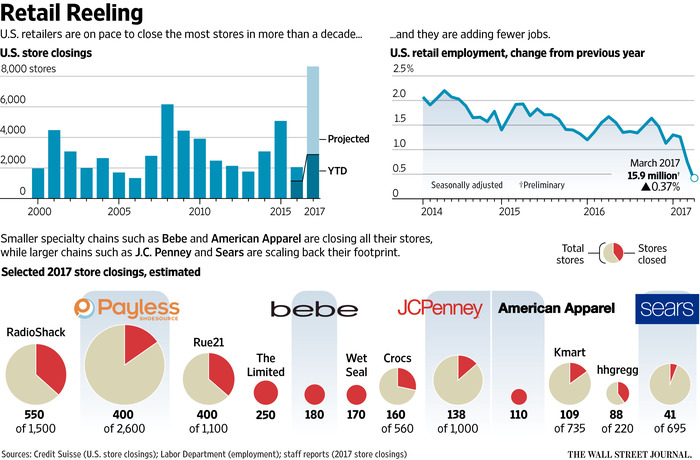


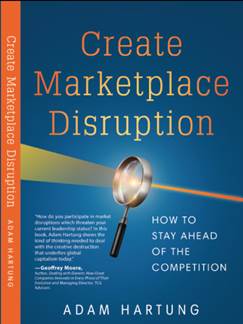



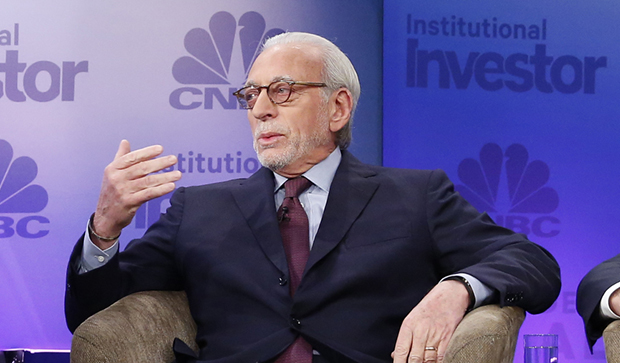


 dollar bills. They are an online currency which can be used to buy things. They are digital cash that exist as bits on people’s computers. You can’t put them in a drawer, like dollar bills or gold Krugerrands. Bitcoins are used to complete transactions – just like any currency. Even though they are virtual, rather than physical, they are used like cash when transferred between people through the web.
dollar bills. They are an online currency which can be used to buy things. They are digital cash that exist as bits on people’s computers. You can’t put them in a drawer, like dollar bills or gold Krugerrands. Bitcoins are used to complete transactions – just like any currency. Even though they are virtual, rather than physical, they are used like cash when transferred between people through the web. In the 1630s, people in Holland thought of tulip bulbs as stored value. Tulips were desired, giving tulip bulbs value. But over time, people acquired tulip bulbs not to plant but rather for the stored value they represented. As more people bought bulbs, and put them in a drawer, the price was driven higher, until one tulip bulb was worth 10 times the typical annual salary of a Dutch worker — and worth more than entire houses. People thought the value of tulip bulbs would go up forever.
In the 1630s, people in Holland thought of tulip bulbs as stored value. Tulips were desired, giving tulip bulbs value. But over time, people acquired tulip bulbs not to plant but rather for the stored value they represented. As more people bought bulbs, and put them in a drawer, the price was driven higher, until one tulip bulb was worth 10 times the typical annual salary of a Dutch worker — and worth more than entire houses. People thought the value of tulip bulbs would go up forever.
